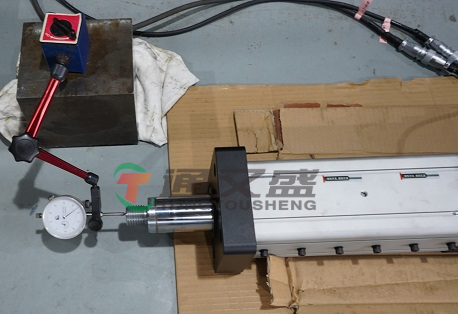Application of Small-Speed Electric Cylinders in University Laboratory Equipment
In university research, experimental simulation is a key link in exploring scientific principles and verifying theoretical hypotheses. Small high-speed electric cylinders provide high-precision motion control and force control support for experimental simulation, significantly improving the automation level of experiments and the accuracy of data.
Take the experiment on material fatigue performance research as an example, which needs to simulate the cyclic stress process of materials under different load conditions.
Researchers selected the TYSC series small high-speed electric cylinders from Tongyisheng Small High-Speed Electric Cylinder Manufacturer. These cylinders have a repeat positioning accuracy of ±0.01 mm, a target speed of up to 100 mm per second, and support variable speed control.
During the experiment, through programming settings, small high-speed electric cylinders can accurately output forces of different magnitudes, simulating the alternating loads that materials bear in actual working conditions.

Multiple electric cylinders can operate synchronously to ensure uniform deformation of the sample during the stress process, avoiding deviations in experimental data caused by uneven force application.
During the experiment, small
high-speed electric cylinders perform repeated stretching-compression operations on material samples at specific frequencies and displacements according to preset programs.
Real-time monitoring of the output force is conducted through pressure sensors. When there is a slight change in the force on the sample, the small high-speed electric cylinder can respond quickly, adjust the output force, and follow up according to the deformation of the sample to maintain the set load level at all times.
The application of small high-speed electric cylinders makes the load on materials during the experiment closer to real conditions, and the obtained data is more reliable, providing a solid data basis for research such as material fatigue life prediction.
The entire experimental process is automated, eliminating the need for researchers to manually adjust equipment parameters frequently. This greatly improves experimental efficiency, reduces errors introduced by human operations, and promotes the smooth development of innovative research projects in the field of materials science.
